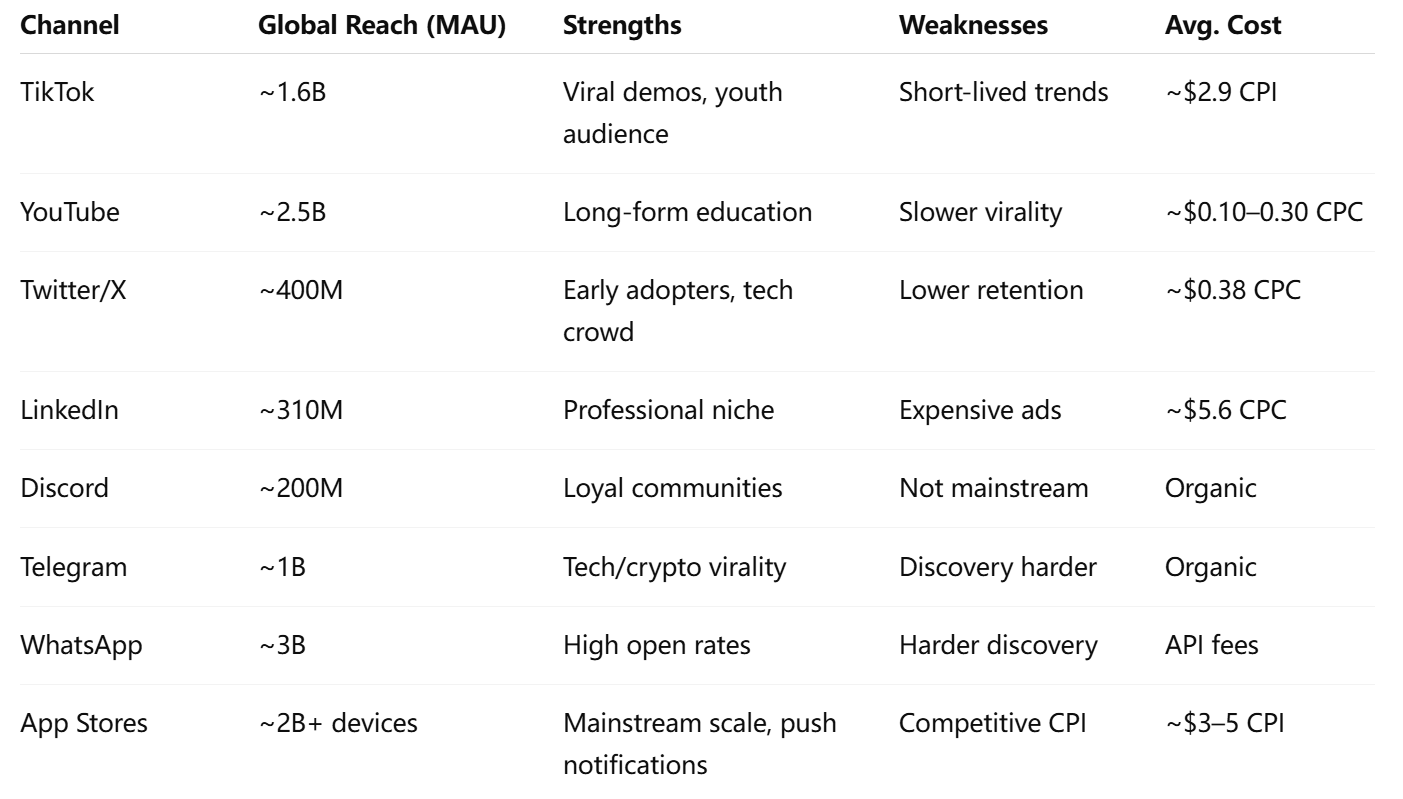Questflow and the New Rules of AI Distribution
Why We Built Full-Funnel, Multi-Channel Growth from Day One
Introduction
At Questflow, we believe distribution is not just about visibility — it’s the bridge between innovation and impact.
The AI industry has shown how quickly demos can spread: ChatGPT reached 100M users in two months, Midjourney grew to 20M Discord members, Lensa AI topped the App Store charts via TikTok virality. But here’s the hard truth: no single channel is enough.
Users discover, test, and adopt AI tools across social media, communities, app stores, and messaging apps. A fragmented presence means fragmented growth. That is why Questflow made multi-channel distribution a core strategy from the very beginning — ensuring our autonomous agents can be discovered, trusted, and adopted wherever users already are.
Why Multi-Channel Distribution Matters
AI products face unique pressures:
Low switching costs: Users can try dozens of AI apps in minutes. If you’re not where they look, you risk being forgotten.
Fragmented discovery: WhatsApp dominates India and Europe, Discord dominates AI art, TikTok dominates Gen Z.
Short attention cycles: Virality spikes, but retention fades fast unless users are captured into deeper channels.
Regional monopolies: Each region has a “default” channel — LINE in Japan, KakaoTalk in Korea, WeChat in China.
👉 For Questflow, this means distribution is not about picking one “main” channel. It’s about designing a system where social, community, product, and messaging channels reinforce each other across the funnel.
Comparing Channels: Reach, Cost, and Engagement
Questflow’s approach:
We amplify awareness and credibility through X, LinkedIn, YouTube, TikTok, Instagram.
We deepen engagement through Discord and Telegram communities.
We provide access via PC, Mobile, Tablet apps and mini-apps on Base and Gate.
We embed daily usage through Telegram and WhatsApp bots.
We will expand reach through Google Play and App Store distribution in the future, while enabling financial flows via OKX and Circle integrations.
This design ensures Questflow’s presence across awareness, adoption, and retention touchpoints.
Case Studies — and Questflow’s Takeaways
Midjourney (Discord-first): Built deep engagement but later added web for mainstream.
Takeaway: Community-first is powerful, but mainstream channels must be part of the roadmap.Lensa AI (TikTok virality): Viral avatars drove millions of installs.
Takeaway: Social sparks should feed into app adoption or messaging integration.Inflection Pi (Omnichannel): Launched on web, iOS, WhatsApp, Instagram.
Takeaway: Confirms the value of lowering entry barriers across multiple doors.Character.AI (social + app): Grew via content sharing, then scaled via app stores.
Takeaway: Marketing channels must transition into product distribution for lasting growth.Snap’s MyAI (inside Snapchat): Reached 750M users overnight by riding an existing app.
Takeaway: Embedding into existing ecosystems (as Questflow does with Base and Gate) can accelerate reach.
Each case demonstrates why multi-channel distribution is a necessity, not a luxury. Questflow’s strategy integrates these lessons into one blueprint.
Global Perspective
US & Europe: TikTok + App Stores + Discord → Questflow builds for both Gen Z virality and professional trust.
India & LatAm: WhatsApp + YouTube dominate → Questflow prioritizes bot access and video-first storytelling.
Japan/Korea: LINE + Kakao → Questflow prepares integrations for local ecosystems.
Middle East & Africa: WhatsApp + Telegram + Android → Questflow’s design supports bot-first and Android-first adoption.
Southeast Asia: Mix of Facebook, LINE, Zalo → Questflow localizes entry per country.
Our global logic is simple: channel-complete = region-ready.
The Questflow Blueprint
The chart above illustrates Questflow’s full-funnel distribution system:
Marketing channels → X, LinkedIn, YouTube, TikTok, Instagram, Discord, Telegram, Substack, Zora, Blog.
Product channels → PC, Mobile, Tablet apps; Base & Gate mini-apps; Telegram bots; OKX & Circle.
Each channel plays a deliberate role:
Awareness → Interest → Conversion → Retention.
Marketing feeds into product, product usage fuels marketing visibility.
This is Questflow’s distribution logic: a connected, resilient system, not a scattershot presence.
What This Means for Builders and Users
For builders, Questflow’s approach shows:
Don’t bet everything on one channel.
Design the funnel so users can move fluidly from discovery to retention.
Build redundancy to withstand algorithm or policy shifts.
For users, Questflow’s multi-channel presence means:
Multiple ways to access agents — web, bots, apps, communities.
Consistency across devices and platforms.
Lower friction, since adoption doesn’t require changing habits.
Conclusion: Why We Built Full-Funnel
For consumer AI, multi-channel distribution isn’t a choice — it’s survival.
Social sparks awareness.
Communities build trust.
App stores deliver scale.
Messaging embeds into daily life.
At Questflow, this is our strategy. We’ve built a complete distribution stack — spanning marketing and product layers — so our autonomous agents can be discovered, trusted, and retained worldwide.
The winners of the AI era will not be the smartest models alone, but those that master distribution across every user touchpoint. That is Questflow’s bet — and our blueprint for the future of AI adoption.



